Galaxies detected beyond the limits of Hubble!
Even though we can’t see individual galaxies past a certain point, we know they’re there. Here’s the first evidence.
“Our posturings, our imagined self-importance, the delusion that we have some privileged position in the Universe, are challenged by this point of pale light. Our planet is a lonely speck in the great enveloping cosmic dark. In our obscurity, in all this vastness, there is no hint that help will come from elsewhere to save us from ourselves.” –Carl Sagan
When we peer out into the vast abyss of space, through the stars, planets, gas and dust of our own Milky Way, there’s a whole Universe beyond to see. Our home galaxy is just one of hundreds of billions in the known Universe, where no matter what direction we look in, we’re bound to run into a galaxy given a distant enough journey.
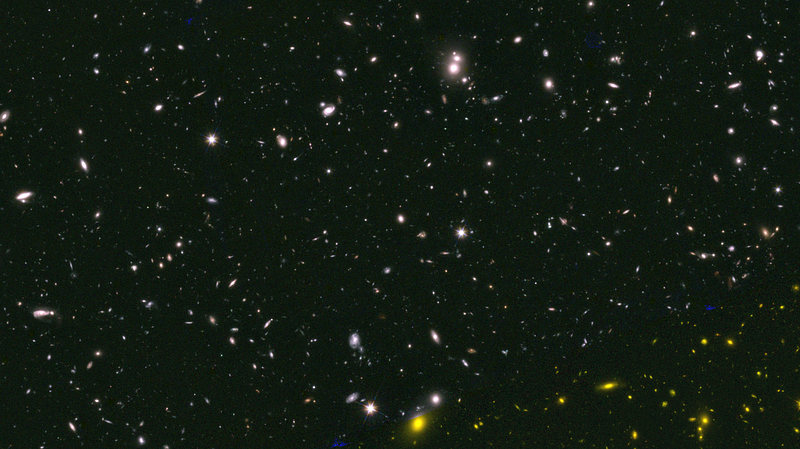
At least, that’s what you might think. Yet when we view the distant Universe, that’s only the case in a few select locations. Sure, there are tremendous numbers of galaxies out there, and no matter what region of sky we pick to look at, we see that the Universe is littered with them.
But even with that in mind — no matter how much light we gather, how large a telescope we use or how long we look for — many regions of space remain dark.

There are two reasons for this, though, that have everything to do with how our Universe actually is. We normally think of space as infinite: going on forever, without end, filled with the same “stuff” that our own local patch of Universe is filled with. Although it’s true that our location in space isn’t anything special, what we see here and now is different than what we see elsewhere.
For starters, the speed of light is fast, but the Universe is very large. When we look out at the distant Universe, we’re seeing everything in it as it was millions or even billions of years ago.
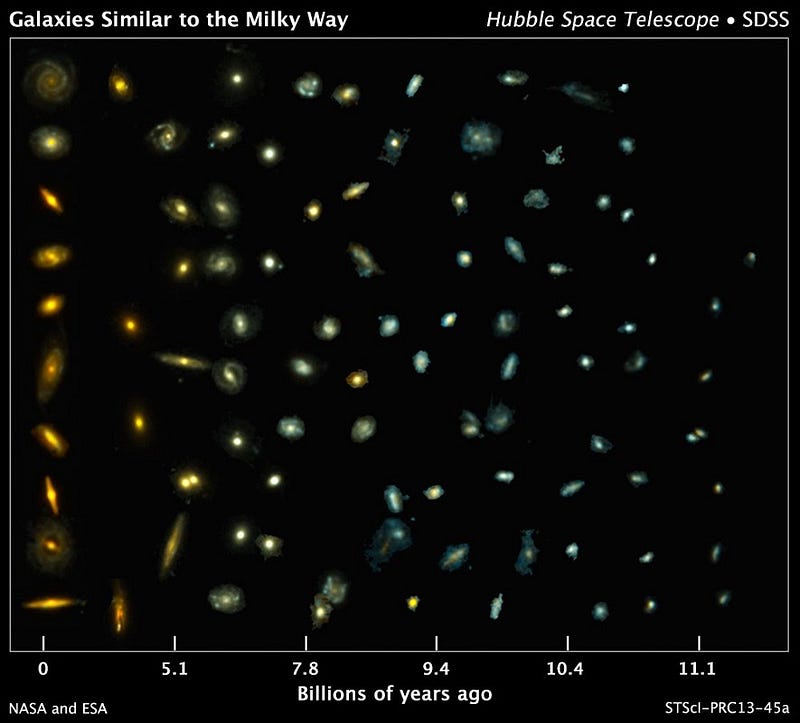
And the Universe has evolved tremendously over that time. Stars are born, live, burn through their fuel, die, and give rise to subsequent generations of stars. The initially “blue” galaxies evolve, becoming redder and redder after the last major burst of star formation, as the brightest, bluest stars become the first to die. And smaller galaxies merge together, drawn irresistibly towards one another as gravitation does the one thing it does — bring massive object together — over time.
The galaxies we see today are fundamentally different than the galaxies we see when we look out billions of light years across the Universe, but not merely because they’re less evolved than the ones that exist at present. The galaxies from long ago are different because the Universe itself was younger then — less time had passed since the Big Bang — and also because the Universe itself has been expanding during all this time.
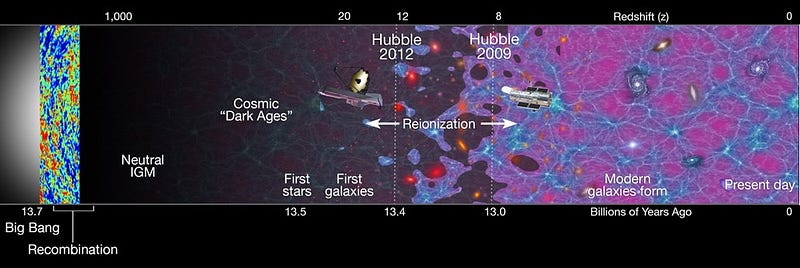
Galaxies were in a denser environment in the distant past, galaxies were made of different elemental compositions in the distant past, and perhaps most importantly, light from these distant galaxies has been altered by the expansion of the Universe.
In particular, this light, mostly emitted in the ultraviolet for the youngest galaxies with the most newly-formed stars, has been stretched by the expanding fabric of space so that it’s passed not just into the visible light portion of the spectrum, but well beyond it into the infrared. How ironic, that once-invisible light was made visible by the expansion of the Universe for a time, only to become invisible again in the opposite direction due to that same expansion.
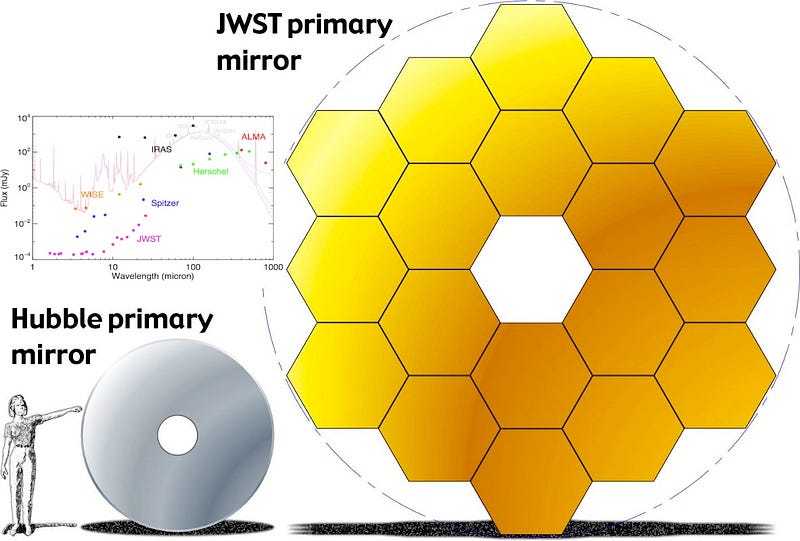
The great hope of the James Webb Space Telescope, the infrared successor to Hubble slated to launch in 2018, is that it will be able to observe these galaxies and first stars directly, as it’s capable of viewing long infrared wavelengths to sensitivities unprecedented by any telescope — ground-based or space-based — in all of human history.
Yet thanks to a team led by UC Irvine researchers Ketron Mitchell-Wynne and Asantha Cooray, we don’t have to wait for James Webb to know that these heretofore invisible galaxies are out there. Instead, there’s a brilliant trick that relies on viewing the space between the most distant visible galaxies, where all that appears on a photographic plate is blackness.
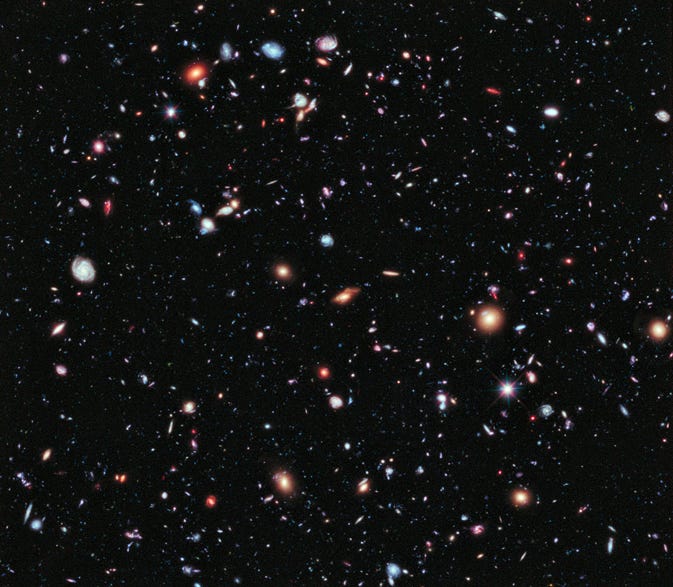
You see, in addition to the light we see that comes directly from identifiable point sources — things like individual stars and galaxies — there’s a generally unidentifiable background: the extragalactic background light. This isn’t to be confused with the cosmic microwave background, but rather is due to the total emission from all the stars and galaxies in the Universe, even when the individual sources themselves are too dim to be seen.
If you look at the fluctuations in this light — all of which has been shifted into the infrared at large distances — you can measure how much light was emitted by stars and galaxies when the Universe was just 500 million years old, or less than 4% of its current age.
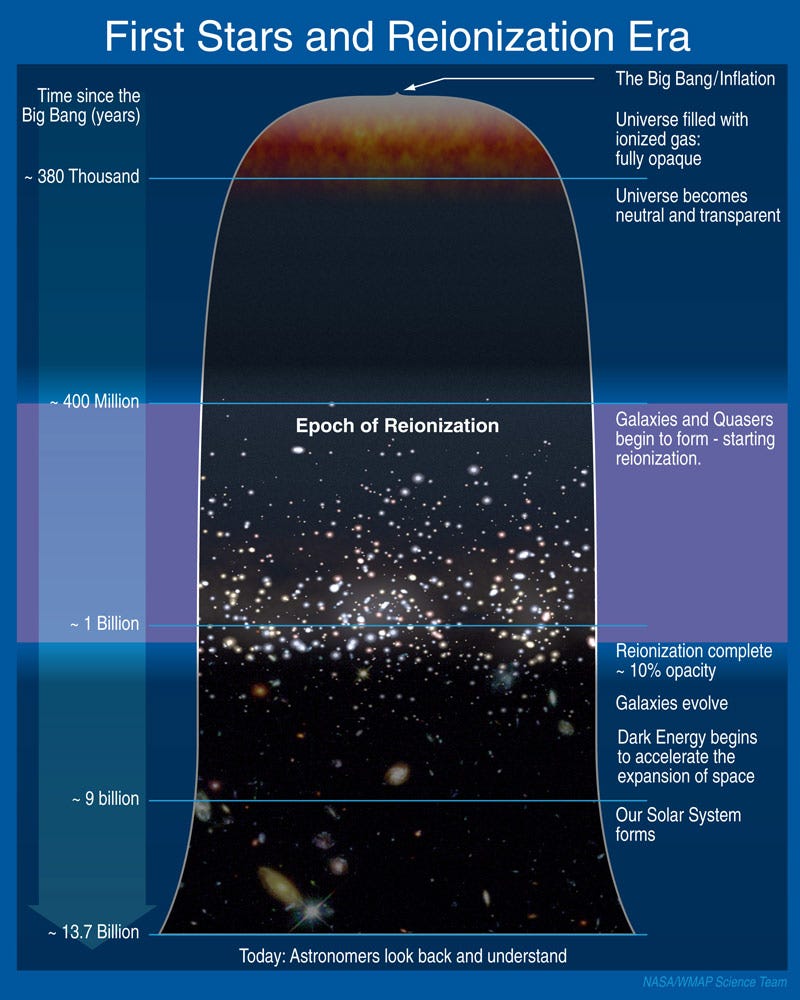
Using data from the Cosmic Assembly Near-Infrared Deep Extragalactic Legacy Survey (CANDELS) and the Great Observatories Origins Deep Survey (GOODS), they were able to detect the presence of ultra-distant, infrared light that was definitively not from stars-and-galaxies at nearer distances, but rather from at least 30 billion light years away (or at a redshift z > 8, for the technical-minded among you).
And, of course, we don’t have individual galaxies out that far; we just announced the discovery of the very first one that distant last week, and it isn’t something that shows up on Hubble’s photographic plates.

Instead, what this new paper is detecting is the background light coming from sources more distant than the galaxies Hubble’s been able to image.
What’s truly remarkable are the following conclusions we can draw from this study:
- There is a significant surface density of faint, primeval galaxies that are below the point-source detection limit of current surveys.
- These galaxies are energetic and luminous enough that James Webb will be able to see them.
- The long-wavelengths of 1.6 microns (1,600 nanometers, a little more than twice the wavelength of the longest visible light) is actually dominated by these high-redshift, most distant galaxies.
- And finally, the confidence level at which these galaxies must exist is at about the 99.2% level.
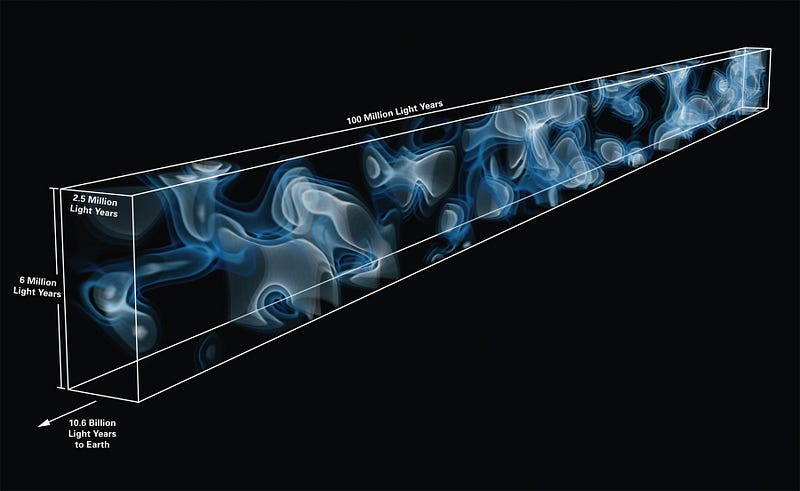
Based on estimates of what they find the density of starlight to be, we can conclude that there are likely at least tens of billions of additional galaxies beyond the ones we can already see, just at those incredibly large distances.
Thanks to James Bullock and UC Irvine for contacting me about this amazing story (and paper), and you can read the study yourself here. It’s an amazing testament to what you can find just by studying archival data with Hubble: this is information that’s there and freely available to anyone in the world. The Universe is out there and accessible to everyone. Want to learn the story it tells us about itself? All you have to do is ask it the right questions: the answers are written across the Universe itself.

Leave your comments at our forum, and if you really loved this post and want to see more, support Starts With A Bang and check us out on Patreon!





